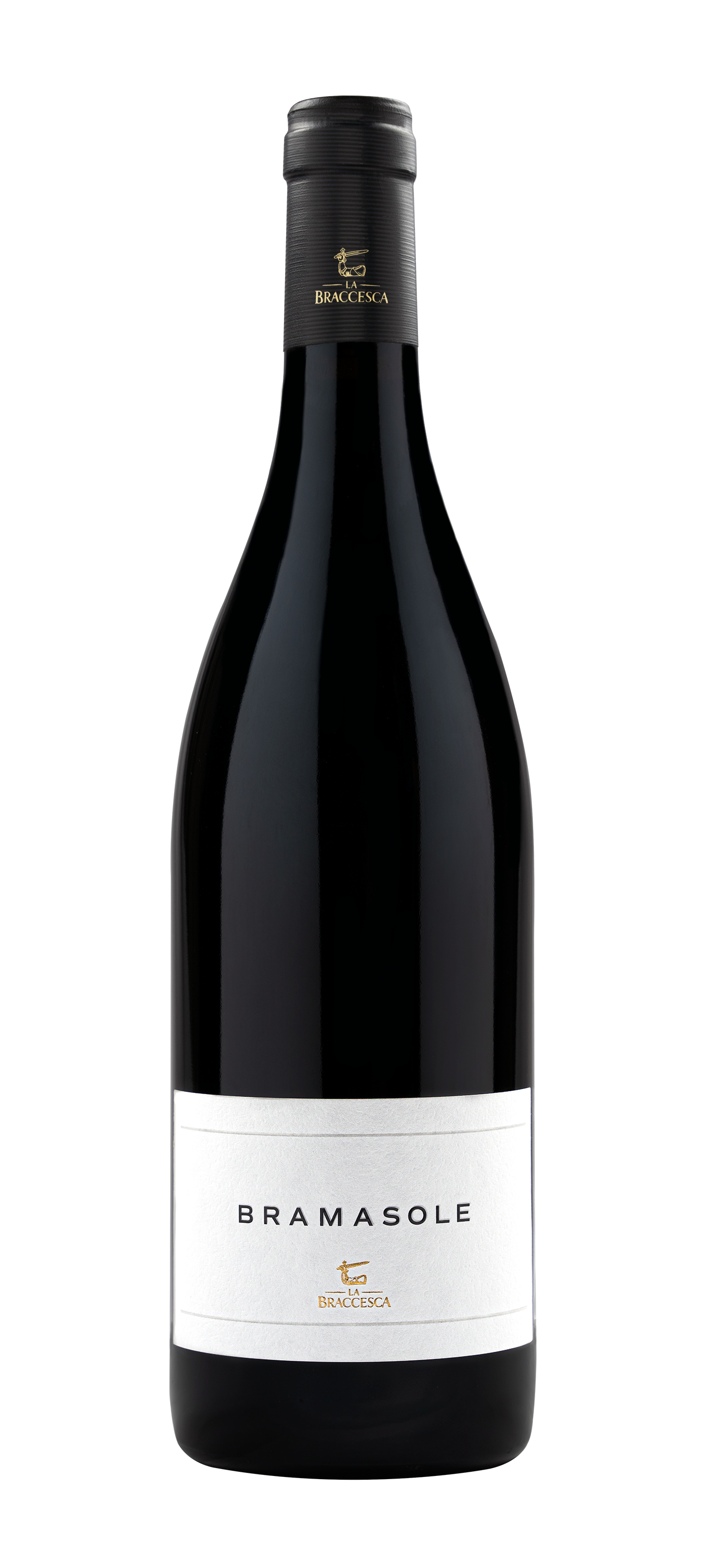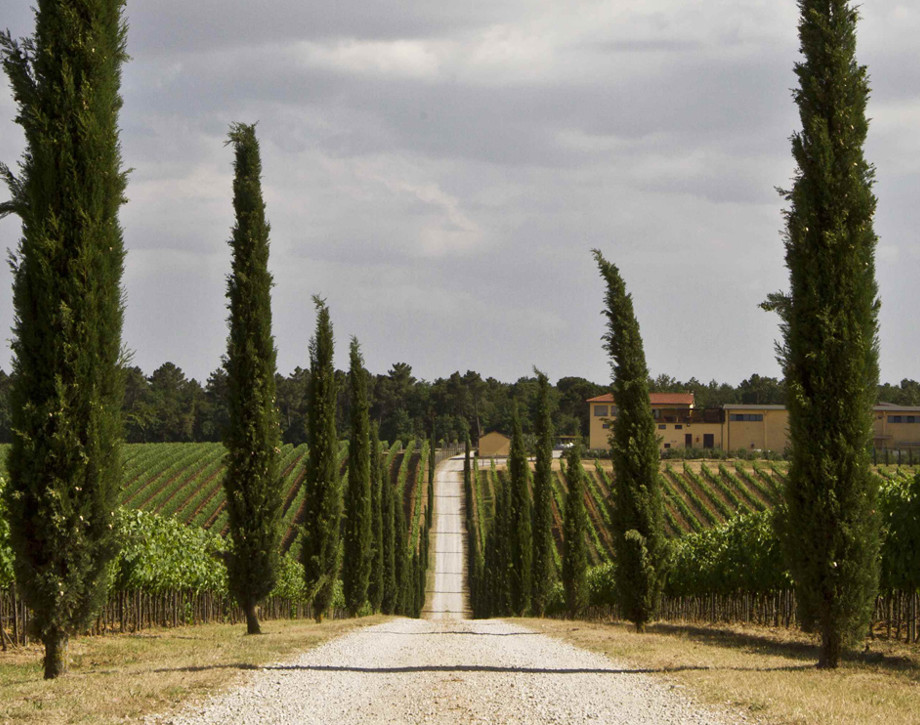Bramasole

Climate
The heavy rainfall in autumn 2003 refreshed the soil which had been subjected to extreme drought in the summer. The winter temperatures were quite low with heavy, frequent rain and snow. This caused a delay in budbreak which took place about 10-15 days later than average, even in the more precocious varieties. During flowering and fruit-setting the weather was very rainy and cool (with the lowest seasonal temperatures for several years) and the foliage developed well, although again later than usual, right through to the veraison and ripening phases. Intense pre-harvest selection was necessary since this weather trend made the plants excessively productive. Lastly, the harvest began a couple of weeks later than the seasonal average, when the grapes reached the perfect balance of quality and quantity both in vegetation and ripeness.
Vinification
The grapes grown in the vineyards of the La Braccesca estate were picked when perfectly ripe. After destemming and soft crushing maceration took place, lasting for 15-18 days. During this phase the wines completed their alcoholic fermentation at temperatures no higher than 30°C. After alcoholic fermentation the wine was placed in new barriques (Alliers and Tronçais) where it completed malolactic fermentation. The wine aged for about 14 months in barriques, undergoing racking several times, and was bottled in early spring. It was then aged in the bottles for about another year before release.
Historical Data
The estate’s name comes from the historical farm that once stood there, owned by the Count of Bracci, whose coat of arms appears on the estate’s logo; an arm covered with armor brandishing a sword. The property extends over an area of 508 hectares (1255 acres) and the vineyards cover an area of 340 hectares (840 acres) divided into two blocks: the first is 366 hectares (904 acres) of which 237 (585 acres) are planted with vineyards and is located on the border between the cities of Montepulciano and Cortona. The other block is 142 hectares (350 acres) of which 103 (254 acres) are planted with vineyards, it extends all the way to Montepulciano encompassing three of the most famous parcels of land known for the production of great red wines: Cervognano, Santa Pia and Gracciano. Bramasole is made from the sunniest part of the vineyard in one of Cortona’s best areas for the production of premium quality Syrah. Bramasole is a wine able to evolve over time and reflect this territory and its long-standing winemaking traditions using a new untraditional variety. Bramasole’s first vintage was 2000.
Tasting Notes
Good deep colour, intense fruit aromas with hints of vanilla and a generous complex flavour. This is a well-structured wine with a soft, lingering finish.
Awards
Wine Enthusiast 93/100 USA

The Wine
Bramasole is made from the sunniest part of the vineyard, from the Antinori family’s innovative spirit and from one of Cortona’s best areas for producing premium quality Syrah. Bramasole is a wine able to evolve over time and reflect this territory and its long-standing winemaking traditions using a new untraditional variety. The first vintage to be produced was the 2000 vintage.

Climate
The heavy rainfall in autumn 2003 refreshed the soil which had been subjected to extreme drought in the summer. The winter temperatures were quite low with heavy, frequent rain and snow. This caused a delay in budbreak which took place about 10-15 days later than average, even in the more precocious varieties. During flowering and fruit-setting the weather was very rainy and cool (with the lowest seasonal temperatures for several years) and the foliage developed well, although again later than usual, right through to the veraison and ripening phases. Intense pre-harvest selection was necessary since this weather trend made the plants excessively productive. Lastly, the harvest began a couple of weeks later than the seasonal average, when the grapes reached the perfect balance of quality and quantity both in vegetation and ripeness.
Vinification
The grapes grown in the vineyards of the La Braccesca estate were picked when perfectly ripe. After destemming and soft crushing maceration took place, lasting for 15-18 days. During this phase the wines completed their alcoholic fermentation at temperatures no higher than 30°C. After alcoholic fermentation the wine was placed in new barriques (Alliers and Tronçais) where it completed malolactic fermentation. The wine aged for about 14 months in barriques, undergoing racking several times, and was bottled in early spring. It was then aged in the bottles for about another year before release.
Historical Data
The estate’s name comes from the historical farm that once stood there, owned by the Count of Bracci, whose coat of arms appears on the estate’s logo; an arm covered with armor brandishing a sword. The property extends over an area of 508 hectares (1255 acres) and the vineyards cover an area of 340 hectares (840 acres) divided into two blocks: the first is 366 hectares (904 acres) of which 237 (585 acres) are planted with vineyards and is located on the border between the cities of Montepulciano and Cortona. The other block is 142 hectares (350 acres) of which 103 (254 acres) are planted with vineyards, it extends all the way to Montepulciano encompassing three of the most famous parcels of land known for the production of great red wines: Cervognano, Santa Pia and Gracciano. Bramasole is made from the sunniest part of the vineyard in one of Cortona’s best areas for the production of premium quality Syrah. Bramasole is a wine able to evolve over time and reflect this territory and its long-standing winemaking traditions using a new untraditional variety. Bramasole’s first vintage was 2000.
Tasting Notes
Good deep colour, intense fruit aromas with hints of vanilla and a generous complex flavour. This is a well-structured wine with a soft, lingering finish.
Awards
Wine Enthusiast 93/100 USA

Tenuta La Braccesca
La Braccesca spreads over 508 hectares where the ancient farm of the Bracci counts once stood, hence the name of the estate and its coat of arms: an arm covered in armour holding a sword. Since 1990 the Marchesi Antinori have owned the estate. The total surface area of the vineyards is 334 hectares divided into two parts: the first, of 232 hectares is located on the border between the municipalities of Montepulciano and Cortona. The other body, 102 hectares of which are planted with vines, extends as far as Montepulciano between three of the most renowned sub-zones for the production of great red wines: Cervognano, Santa Pia and Gracciano.

Soil
Clay loam


















